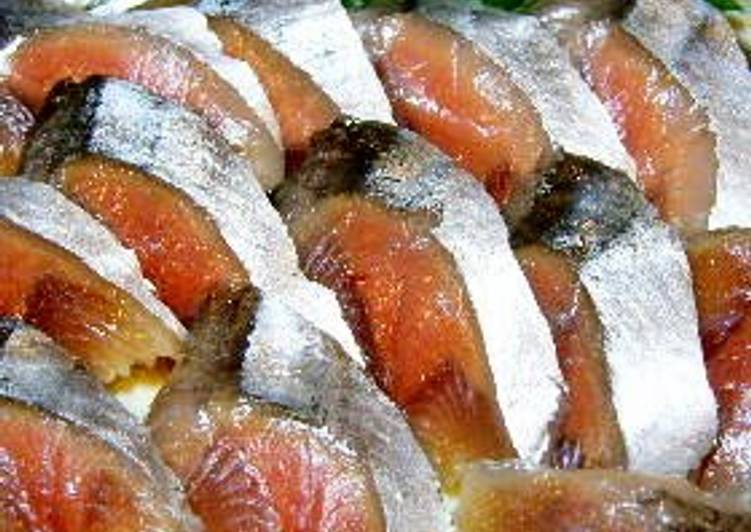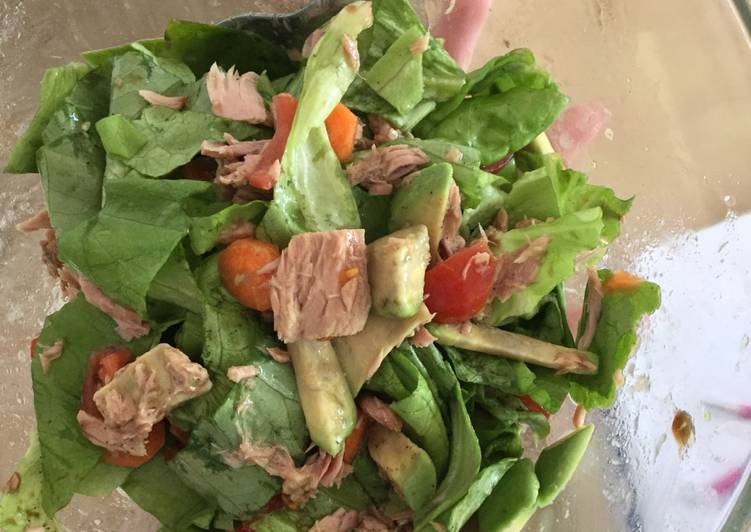
Hey everyone, I hope you are having an incredible day today. Today, I will show you a way to make a special dish, fresh pacific saury prepared with a home kitchen knife (sashimi and cured with vinegar). One of my favorites food recipes. For mine, I will make it a little bit unique. This is gonna smell and look delicious.
How to cook Japanese food, "salt-grilled saury"! Removing of the innards of Saury helps avoid the distinctively bitter taste when eating, which can be described as something between anchovies gone bad and dirt – if you get a sanma that is absolutely fresh and. Two Fresh Pacific Saury Fishes Poster.
Fresh Pacific Saury Prepared with a Home Kitchen Knife (Sashimi and Cured with Vinegar) is one of the most well liked of current trending foods in the world. It’s enjoyed by millions daily. It is simple, it’s quick, it tastes delicious. They’re nice and they look wonderful. Fresh Pacific Saury Prepared with a Home Kitchen Knife (Sashimi and Cured with Vinegar) is something which I’ve loved my entire life.
To get started with this recipe, we must first prepare a few components. You can have fresh pacific saury prepared with a home kitchen knife (sashimi and cured with vinegar) using 3 ingredients and 16 steps. Here is how you cook that.
The ingredients needed to make Fresh Pacific Saury Prepared with a Home Kitchen Knife (Sashimi and Cured with Vinegar):
- Get 1 serving, 1 fish Pacific saury (sashimi grade)
- Take 1 Salt
- Prepare 1 Vinegar
It's usually salted and grilled whole and served with grated daikon and soy sauce to intensify The Japanese enjoy the combination of the bitter intestine flavor with fresh grated daikon soy sauce. Sashimi is sliced raw fish and has been eaten by Japanese people for hundreds of years. Usually Sashimi is served with Soy Sauce to dip, but sometimes salt or citrus juice is preferred for some fish. Sashimi is an essential part of Japanese cuisine, and it is becoming more and more popular outside.
Instructions to make Fresh Pacific Saury Prepared with a Home Kitchen Knife (Sashimi and Cured with Vinegar):
- Cut into the fish around its neck, just above the side fin, until the knife blade hits the backbone.
- Cut into the belly from the lower part of the fish to below the side fin.
- If you break the fish's neck by bending it towards the belly, the head and guts should be removable together. Rinse out any residue.
- Fillet the right side first. Place the fish with the belly facing you and the tail facing left. Cut into the fish from the lower part, all the way to the other side above the backbone. Slice above the bone to the tail.
- Next, place the tail to the right and slice the fish from the tail to the head end as shown here.
- Let's tackle the left side next! With the back edge facing you, make a cut about 4cm (just eyeball this) in starting from the tail end, pushing the blade through the other side. Then cut through the fish as shown in the Step 7 photo.
- Turn the fish over, hold it down and cut through the fish over the backbone. Once you get used to it you can do this all in one go.
- Once the fish is filleted, slice out the main bones. Start by holding the knife with the blade facing upwards, and make a cut from the middle of the fish in between the flesh and the bones.
- Next, hold your knife the normal way and slice out the backbone.
- Once the backbone has been removed, salt the fillets generously, put into a tray or similar, and leave in the refrigerator for 20 minutes to firm up. When moisture comes out of the fish, rinse the fillets off under running water to remove the salt, and pat dry with paper towels. The traditional method is to rinse the fish in vinegar or sake, but using water doesn't make a big difference in the taste.
- Next, immerse the fish in vinegar and leave to marinate in the refrigerator for about 10 minutes. Wipe the vinegar off very well, and peel off the skin with your hands! You can start from the head end or the tail end. If you start from the tail end, it's easier if you make a 1cm or so cut first! The skin rips easily so go gently.
- There are some small bones left in the flesh. Slice the fillets diagonally as if to cut through these tiny bones. You may feel the bones when you are slicing, but you won't really feel them when you eat the fish! If the bones really bother you I recommend curing the fish in vinegar (Step 15).
- Line up the sliced fish on a plate and serve. I cured the fish with salt and vinegar, but this is not to add flavor; it's to get rid of any parasites and bacteria and to firm up the fish so that is has a more pleasing texture. You won't really taste the vinegar or salt, so you can eat this like sashimi.
- If you want to cure the fish with vinegar some more, add sugar to the vinegar in Step 12 and leave the fish to marinate for 3 hours. The result is vinegar-cured fish that has a sour flavor. If you leave the fish in salt for a longer time in Step 11 the fish will be 'cooked' through (it will turn white), but it won't taste as good.
- The photo shows one serving of vinegar-cured Pacific saury that was on sale. It cost 70 yen.
The Pacific saury (Cololabis saira) is a member of the family Scomberesocidae. This saury, which is a food source in some East Asian cuisines, is also known by the name mackerel pike. It is known as sanma (サンマ / 秋刀魚) in Japanese, 秋刀鱼 (Simplified Chinese) or 秋刀魚 (Traditional Chinese). Sashimi is a traditional Japanese raw fish dish. Discover how to choose the freshest fish to make Choose the best sashimi.
So that is going to wrap it up with this exceptional food fresh pacific saury prepared with a home kitchen knife (sashimi and cured with vinegar) recipe. Thanks so much for reading. I am confident that you can make this at home. There’s gonna be interesting food in home recipes coming up. Remember to bookmark this page in your browser, and share it to your loved ones, friends and colleague. Thanks again for reading. Go on get cooking!


